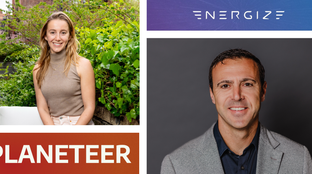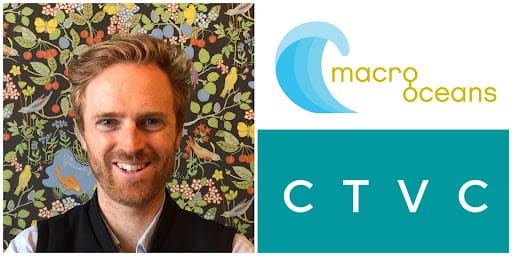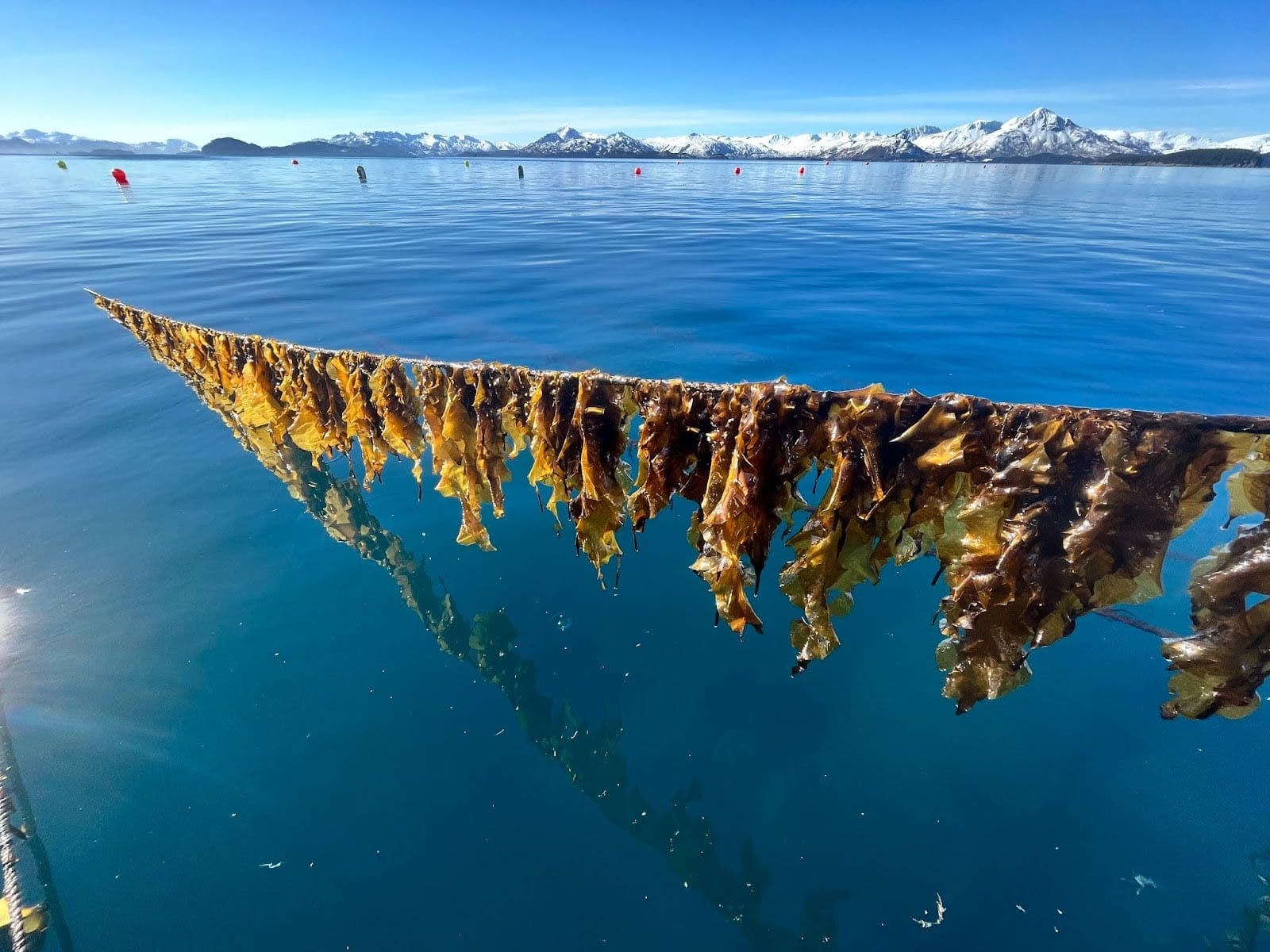
🌎 Two climate investors on raising in today's tough market
Q&As with Sophie Purdom, who just closed first-time Planeteer Fund I, and John Tough, who recently closed Energize Capital's mega-fund Ventures Fund III
The synthetic bio startup sees an upswell of seaweed applications beyond the food industry

A wave of kelp-crazed capital surfaced low-carbon solutions from cow farts to veggie burgers to textiles and carbon removal that all share roots with the submerged miracle crop. But before we dive in, some sea flora basics:
Macro Oceans, founded in 2020, is attacking the fast-growth crop’s early days with a precision focus on a specific link of the broader value chain: biorefining. The startup cultivates farmer supply by offtaking kelp, which it processes into low-carbon chemicals and other high-value feedstocks for use from cosmetics to packaging.
We spoke with CEO and founder Matthew Perkins about the startup’s pilot project, partnerships, and his POV on seaweed’s potential.
Can you share a bit about your background and the experiences that led you to found Macro Oceans?
I spent almost a decade in the seed industry, focusing on seed genetics and digital technology before working on the farm. I love bringing great ideas out of the lab and into the real world to solve problems for farmers and other industries. Agriculture is one of the most destructive activities we do on this planet, not only in terms of the sheer amount of carbon that it produces, but impacts on local ecosystems like topsoil erosion. After working at big seed companies and in gene editing, I started a company early in the digital agriculture space Yield Pop, and sold that company to the Climate Corporation, which is a big data farming platform. But I realized a lot of what I was doing was tweaking a system that was already set in stone, and I felt there must be a way to systemically disrupt the system.
About two years ago, I came across kelp—as many people did—and got fascinated by the potential environmental benefits from using kelp as a feedstock for all kinds of different applications. It seemed like this wonder story: It draws on nutrients, a lot of times excess nutrients, in the ocean. It sequesters carbon as it grows. It grows incredibly rapidly. It doesn't compete with food crops, it doesn't require freshwater.
I thought, ‘This sounds really awesome. Let's go buy me some seaweed.’ I started calling farmers in Alaska to buy seaweed, but they didn’t have much to sell me. They said, 'We can't really make any money growing seaweed.’ I realized that the missing piece to make this a big, scalable business is all the processing capacity and technologies required to turn what is a pretty bountiful, beautiful crop into low-carbon chemicals for industrial markets. Everybody has focused on food, which is going to be a small market by definition. The potential for biopolymers, high-end cosmetic ingredients, food ingredients, and platform chemicals was a huge opportunity, but no one had put it all together. So that was the genesis of Macro Oceans.
Your team works with sugar kelp (Saccharina latissima). Is there any gene editing or modification of the plants themselves, or is it just about the techniques for growing and processing them?
To be clear, we don't grow the kelp. We don’t manufacture any downstream products. We are very narrowly focused on processing. We buy the kelp from farmers, process it in our biorefinery, and then sell the products off to customers who turn those into things for consumers.
None of the seaweed is modified in any way. Right now, the regulations in Alaska require farmers to collect parent seeds from within 50 km of their farm, so everything that's grown is naturally occurring and local to that farm.
How does your tech fit into the value chain? What are you producing and what does innovation look like in the space between the farmers and end users?
Growers face two critical bottlenecks. The first is the short window—six to eight weeks—to harvest the crop. In Asia, they pull it out of the ocean and throw it on the ground to dry in the sun for four or five days, but in Alaska, it's not warm enough for that. The options are either air drying or freezing, both of which are expensive and energy intensive. We've developed a technique to stabilize the seaweed at room temperature for up to 12 months, so that decouples harvesting from production. The stabilization process involves grinding up the seaweed and adding water to create a slurry—or as we call it, a ‘kelp smoothie’—and then adding a few reagents to stabilize it. This prevents microbes from eating the sugars, since complex carbohydrates are the mainstay of our product. We use this slurry to create different extracts using equipment that is similar to what's used in beer brewing—a lot of big tanks, liquid and solid separations, filtrations and exactration. The innovation lies in how we go about processing and delivering unit economics that make sense. Our last 12 months of R&D has been focused on figuring out how to scale up the process from benchtop to pilot. Post-pilot size, we know we can scale up to 10x, 100x, 1000x and it’s going to work.
The second innovation is our multi-product biorefinery. Instead of targeting one product from the seaweed, we built a multi-product biorefinery focused on process intensification to get everything out of the seaweed in a small number of steps with good yields. We've proven this out at pilot scale and can create different streams to monetize. Our process is zero waste, with only wastewater as a byproduct that we clean and discharge.
What are some of the applications for the low-carbon chemicals you're producing from seaweed?
Currently, we have three production streams. The first is a polysaccharide crude, which is a mixture of all these really valuable bioactive compounds. We’re further formulating that for cosmetic customers, like Oh Oh Organic, Aubri Thompson, and other downstream brands. We're starting with cosmetics because it's a good entry point to get to a scale that makes sense for us today, but there are plenty of other big and interesting applications.
The polymer market is absolutely enormous, and we think there are great opportunities to provide low-carbon versions of things like polyethylene and polypropylene that can replace their high-carbon counterparts over time. Our second product is an alginate stream for biopolymer applications like Sway's thin film plastics to replace things like plastic bags. We have a number of other customers looking at similar applications as well as fibers and yarns.
Third, we have a pulp stream. When you're done with the biorefinery, you're left with wet pulp, which you don't want to dry because it's expensive. Paper and packaging work with wet material already, so if we can find a way to add our cellulose to their process, it can strengthen and extend the life of the products—think: recycling an Amazon package six to eight times, rather than four or five. It’s a work in progress, as cardboard and paper manufacturers are huge and there aren't many startups in the space. But we have interesting prototypes.
What’s the climate benefit of using seaweed-derived chemicals versus existing feedstocks? Does carbon removal factor into that equation?
There are two angles to this. One is the intensity of the process and what it takes to make our products versus others. We haven't done very detailed LCAs on this yet, but we know that we will be lower-carbon than using corn, for example. Corn produces roughly half a ton of carbon for every ton of corn grown, mainly due to synthetic fertilizers, which we don't use to grow kelp. The other angle is the displacement effect. If you can create a thin film plastic that can displace petroleum plastic—obviously we need to look at the lifecycle of this—but there's a huge displacement effect from having cleaner feedstocks or replacing petroleum-based products. We have a lot more work to do to nail down all the LCA numbers, so we’ll be doing that over the next year or so.
Carbon removal is definitely part of our customers’ emissions calculations. They're looking for ways of cutting that overall impact and whether seaweed can play a role. So it’s definitely a selling point, but traceability and being able to prove that is critical.
How is the progress on scaling the company and what are the next steps?
Since moving into our facility in December, we’ve successfully built the first stage of our pilot system, which allows us to produce enough volume to meet demand from near-term customers. Next, we’ll improve the system and expand capacity by building a bigger version of it here in Sacramento. This is an important step in a multi-step scale-up process, helping us work out some of the bigger scale things before building in Alaska. Our unit economics are all breakeven positive from the get-go, so we can afford to do that.
Now that we’ve got customers lined up and a working pilot, we just announced our seed round, which we closed back in November 2021, with a great group of investors including Refactor Capital, Lowercarbon, Alaska-focused McKinley Group, and some really awesome angel investors.
How are you thinking about making seaweed-based products cost competitive?
This is actually one of the things we find exciting about having a multi-product approach—we can be cost competitive out of the gate. When we sell an alginate, for example, we enter the market at price parity with other suppliers. What people are really interested in is zero waste, fully traceable supply chain, domestic production and if you can compete on all those aspects, you'll win their business. Our cost of production is often cheaper, because we produce multiple products out of our biorefinery, where our unit economics are superior. Our goal is to create a portfolio of seaweed-based products with different value stacks. There will be high-value products, medium-value products, and more commodity-type products. Because seaweed has so many applications and is so abundant, we don't want to focus solely on one application to the detriment of the others. We always want to have the right mix of value and volume.
We can take margin from high-value applications in the cosmetic space and spread it across the products to have cost-competitive products everywhere. That's really the model, and the innovation is getting the yields and all of the processes to work well.
Who else is missing from the seaweed ecosystem today? In a future robust commercial environment, who else has entered the seaweed industry?

On the upstream side, before the farm, there's people like Hortimare. That's a Dutch company we're already working with that develops kelp genetics, and seeding systems. We're bringing that technology to Alaska. We're also partnering with GreenWave, a nonprofit that's trying to do knowledge-sharing between farms to help farmers scale up. There's a ton of opportunity to get farms to be more efficient, less wasteful, and just have better yields.
We hope that there are more bioprocessors too. There should be many other people like us, because the market is growing. Once we provide a platform and a way for people to get the materials and the chemicals they need, there are going to be a lot more downstream players who come forward and actually want to make products out of this.
What do people get wrong about investing in and building seaweed businesses?
Vertical integration is not the answer. Everyone in the seaweed space has been trying to go from farm to final product—that’s three or four businesses wrapped into one! It's too complicated and capital-intensive to try to do everything. Our approach is to build an ecosystem where we let farmers focus on farming. The primary challenge for seaweed farmers today is that they don't have committed long-term buyers who will pay them reasonable prices for their product. We built our model to meet farmers where they are today, which is around 50 cents a pound for seaweed. It's still expensive, but we believe that over time, as they scale, it will get cheaper. And then we supply downstream companies with clean, high-quality, fully traceable low-carbon chemicals they can turn into fabulous products. We take care of the middle piece. This ecosystem approach is more scalable and allows everyone to focus on what they do best, as opposed to trying to be end-to-end integrated, which will just be slower and way less likely to succeed.
What do you expect this tremendous growth in seaweed farming to look like? Are you exploring expansion beyond Alaska?
Seaweed is 90% water and we don't want to pay to move water around. We want to be an anchor buyer in regions where it makes sense to have a biorefinery close to the production, and we'll buy a baseload that supports the community. Our intent is to show how this is done in one region in Alaska and then scale it up. We want to design and build a system that we can essentially copy and paste across the state and internationally. There’s huge demand in Scotland, Norway, and Chile for brown seaweed, and that's before we even start looking at other types.
We like Alaska because they're managing the growth responsibly. Every farm needs a permit and goes through a review process to ensure there are no conflicts with the natural marine environment, fishing, or recreation. Other countries may not be as careful, but we can build a model of good stewardship that protects the environment and considers local people's needs. We don't want to replicate the extractive industry that is agriculture today. Our vision is for farmers to be more like gardeners, growing polycultures of local species that make sense to them and that allows us to offer customers a diverse portfolio of products made from different species of kelp.
Who do you admire in the space? Is there anyone you think has done a really impressive job of building something?
We've taken a lot of inspiration from Solugen. Solugen has done this amazing job of taking what was essentially a kitchen benchtop system and just continuously scaling it. They’ve done the hard work to go from a concept to a major facility. They’ve proven out the economics and the technology and customers the whole way. And that's kind of been our plan—how do we sell what we have at the smallest possible scale and just continuously scale it up from there?
We have three pillars to this business. On one side we have growers, we need to make sure supply scales up as we need it. We have technology, which needs to work at various volumes. And we have customers, whose needs we need to continuously meet. And we need to make all those three things dance at the same time. That’s the challenge and it's a complex problem. It's not just like shipping a software product. I think Solougen has shown people what clean chemicals can be. And we hope to have them as a customer eventually! Instead of using corn, they can use kelp.
Want to dive in and swim with the turning tide? Macro Oceans is looking to grow the team over the next six months. Check out open roles or get in touch here.

Q&As with Sophie Purdom, who just closed first-time Planeteer Fund I, and John Tough, who recently closed Energize Capital's mega-fund Ventures Fund III

A Q&A with Precursor's David Yeh and Mark1's Julian Ryba-White, new strategic partners in the ecosystem

A Q&A with the DOE LPO director Jigar Shah and Solugen CEO Gaurab Chakrabarti